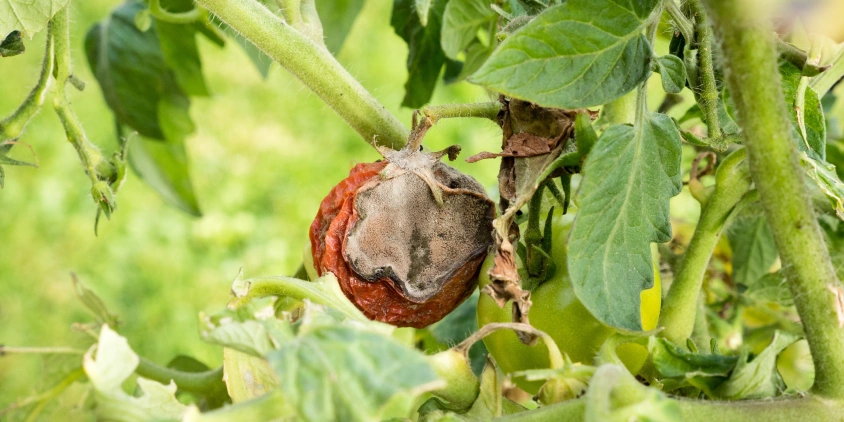
Botrytis Cinerea (Gray Mold): Causes, Symptoms, And Treatment
Among the most economically relevant diseases in agriculture, Botrytis cinerea ranks highly. The disease can damage both growing crops and fruits that have already been picked; it persists in unfavorable conditions and spreads quickly in favorable ones. Despite the abundance of fungicides against Botrytis cinerea, it’s concerning to see their decreasing effectiveness and the negative impact they have on the environment. This has led crop farmers to increasingly rely on cultural and organic gray mold treatment methods. With advanced remote sensing technologies, you can proactively detect potential disease areas in your cropland and intervene early, minimizing the need for chemical control.
What Is Botrytis Cinerea?
Botrytis cinerea is a widespread necrotrophic fungal pathogen that is dangerous for over 1400 plant species. What plants are attacked by gray mold? It doesn’t take much for this crop disease to spread to annual and perennial crops, including growing tomatoes, sunflowers, beans, strawberries, raspberries, apples, pears, plums, and peaches. Most commonly, farmers observe disease symptoms such as gray to brown discoloration and/or mold, as well as water-soaked lesions on infected areas.
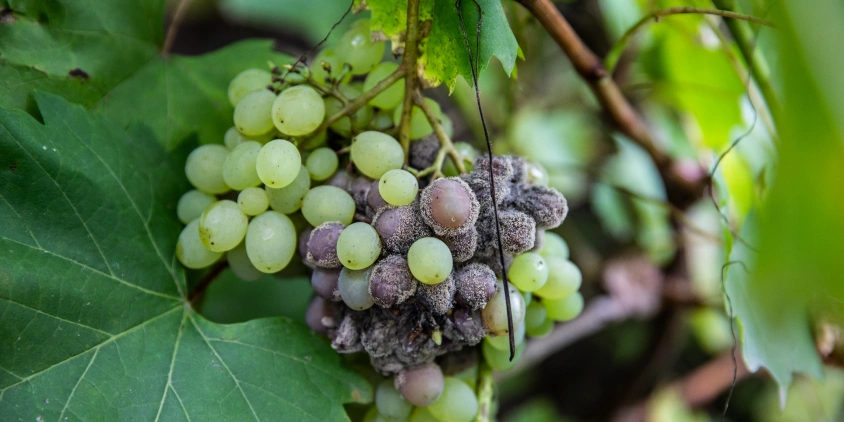
Botrytis cinerea fungi usually attack blossoms and fruit, but they can also cause rot and blight on buds, stems, leaves, roots, bulbs, and tubers. The fungus typically targets fragile, wounded, aging, or dead plant parts. Except for flower petals, direct invasion of actively growing tissues is extremely rare. The gray mold pathogen, capable of surviving at temperatures just above freezing, may pose a threat to crops kept in cold storage.
Process Of Botrytis Cinerea Distribution
Botrytis cinerea needs to obtain nutrients before it can penetrate a plant. Dead or damaged plant tissue, such as old flower petals, can provide nutrients that the fungus needs. Owing to this feeding source, the infection gains strength and spreads to healthy plant tissues. A brownish rot develops in newly infected tissues, which is how Botrytis cinerea deteriorates plants.
Mold can spread via infected seeds or those with fungal spores on their surface. Wind, insects, or rain splashes can easily carry fungal spores, allowing gray mold disease to infect new plants in the field. Germinating in cool to warm, wet environments, Botrytis cinerea spores form a web that feeds on plant tissues before producing more spores to begin the cycle all over again. The fungus also creates specific nutrient-translocating structures to help it survive in a tough environment. For months and even years, fungal spores or sclerotia, a fungal mass with food reserves, can remain dormant in the soil, waiting for favorable conditions.

Botrytis Cinerea Growth Condition
Moist and warm, but not hot — between 64 and 73°F (18 and 23°C) — conditions are ideal for gray mold growth on plants. When temperatures rise above 90°F (32°C), the fungus ceases to grow . Warm temperatures, high humidity, and prolonged wetness all facilitate easy fungus inoculation. Water that pools on the surface of plant leaves can harbor spores that will eventually germinate. It is not uncommon for the pathogen to thrive in controlled conditions, such as greenhouses, because of the constant warmth and humidity there.
It is during the winter months that the pathogen develops in open fields. It can grow in decaying plant parts, providing it with a rich feeding ground. For the fungus to thrive, the pH of the soil must be low. Additionally, the Botrytis cinerea fungus can release organic acids, such as oxalic acid, which acidify the surrounding environment.
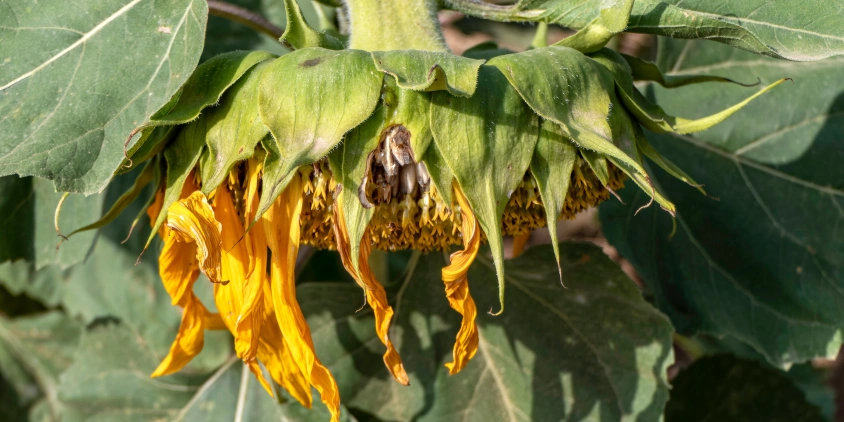
What Are Botrytis Cinerea Symptoms?
Gray mold symptoms manifest differently in different crop types and plant parts. In its typical, most obvious form, which is where the name comes from, gray mold appears as a grayish, fuzzy covering on aging blooms and ripe fruits. Removal of infected parts may release a cloud of pale gray spores into the air.
The infection often appears first as brownish-gray circular spots, which then turn fuzzy due to the spores produced by the fungus. Under low humidity, the infection tends to stay in small locations. However, as humidity increases, Botrytis cinerea can quickly spread and cause decay on buds, flowers, leaves, and fruit. A soft brown rot is typically seen on the ripening fruits of strawberries and grapes. Botrytis cinerea can also cause bulbs and corms to rot.
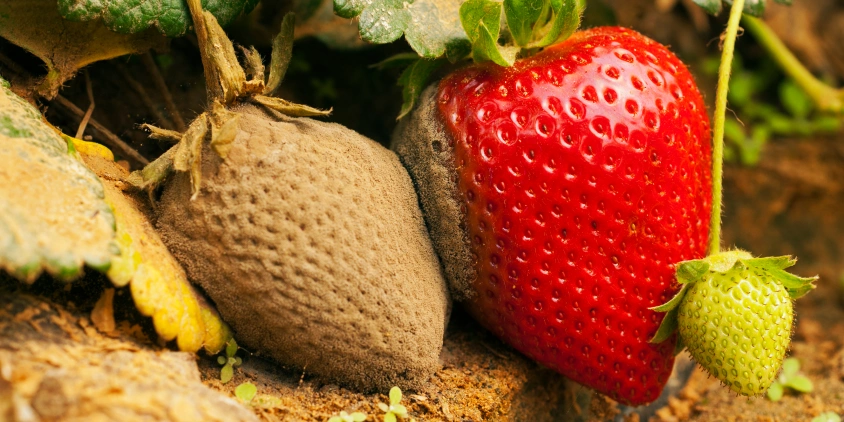
How To Prevent Botrytis Cinerea
To prevent gray mold, destroy its breeding grounds, such as wet conditions and food supplies. Particular measures should include the following:
- Make sure there’s enough room between plants and thin out dense plantations to prove air circulation.
- Irrigate crops in the morning using a drip system rather than a sprinkler one to avoid moisture pooling on foliage.
- Remove any decaying plant parts, including fallen leaves, flower petals, and fruits, from the soil surrounding your plants.
- Be careful not to wound your plants when transplanting, trimming, and handling them.
- Every fall, but especially after a Botrytis cinerea epidemic, clear your fields of any crop residue, which could harbor the fungus sclerotia.
Botrytis Cinerea Treatment And Control
Cultural and chemical methods constitute the backbone of gray mold treatment and control. Cultural measures primarily aim to prevent water from sitting on plant surfaces and in the soil:
- thinning to improve air circulation between plants;
- promoting soil drainage;
- delivering moisture to plants’ root zone.
Good sanitation practices, such as pruning plants, removing diseased or injured parts, clearing debris, etc., are also important in cultural control. In the most critical periods, farmers may consider chemical control, which entails applying Botrytis cinerea fungicides every 10 to 14 days. Do not use treatments containing the same active ingredients several times in a row. To prevent fungicide resistance in Botrytis cinerea, use chemicals from different groups.
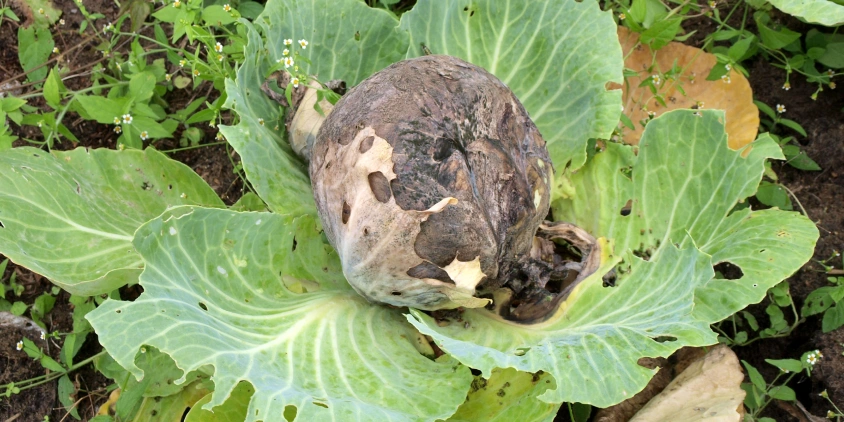
EOSDA Crop Monitoring Solutions: Your Allies Against Botrytis Cinerea
Gray mold is not an easy-to-combat pathogen. As it can remain latent in the field, only expressing symptoms when conditions are favorable, it is difficult to detect and control. Nonetheless, EOSDA’s remote sensing technologies, scouting, and integrated pest management strategies can work in synergy to ensure the success of Botrytis cinerea control measures.
Fields monitoring platform, leveraging high-resolution satellite images to identify and react to any changes remotely!EOSDA Crop Monitoring
Disease Risk Evaluation
The Botrytis cinerea fungus grows quickly, especially during the rainy season. We developed the Disease risk feature in EOSDA Crop Monitoring to help you avoid the damage that a late-detected infection might do to your crops. This feature employs a sophisticated algorithm for farm analytics: weather data, crop growth stage, and other relevant factors to accurately identify days when Botrytis cinerea is likely to develop. Knowing these critical periods, you can step up your scouting activities and take measures to forestall disease outbreaks.
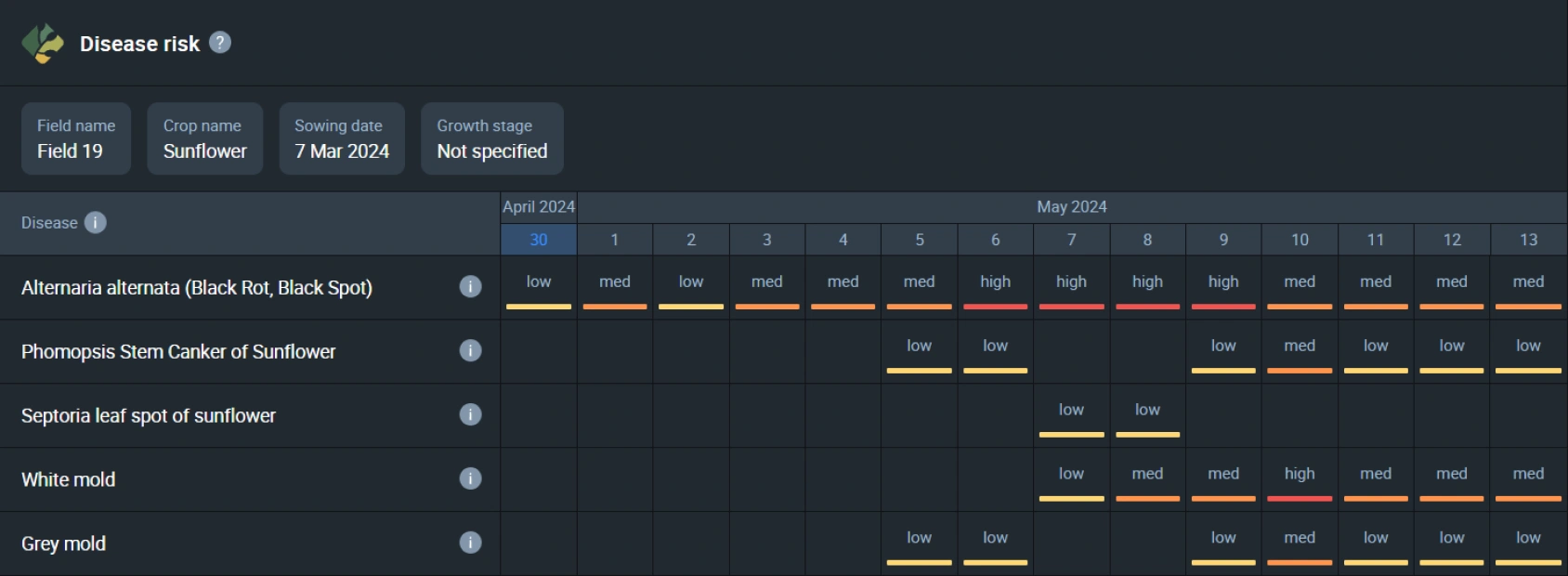
Scouting For Disease Symptoms
If remote monitoring through EOSDA’s solutions reveals a possible outbreak, you can promptly send out scouts to specific spots in the field where the disease appears to be concentrated. Scouts can then create reports and attach photos right from the field using our dedicated mobile application, which works even offline, to help you make swift management decisions. This paves the way for timely, well-informed measures to stem the spread of the crop disease.
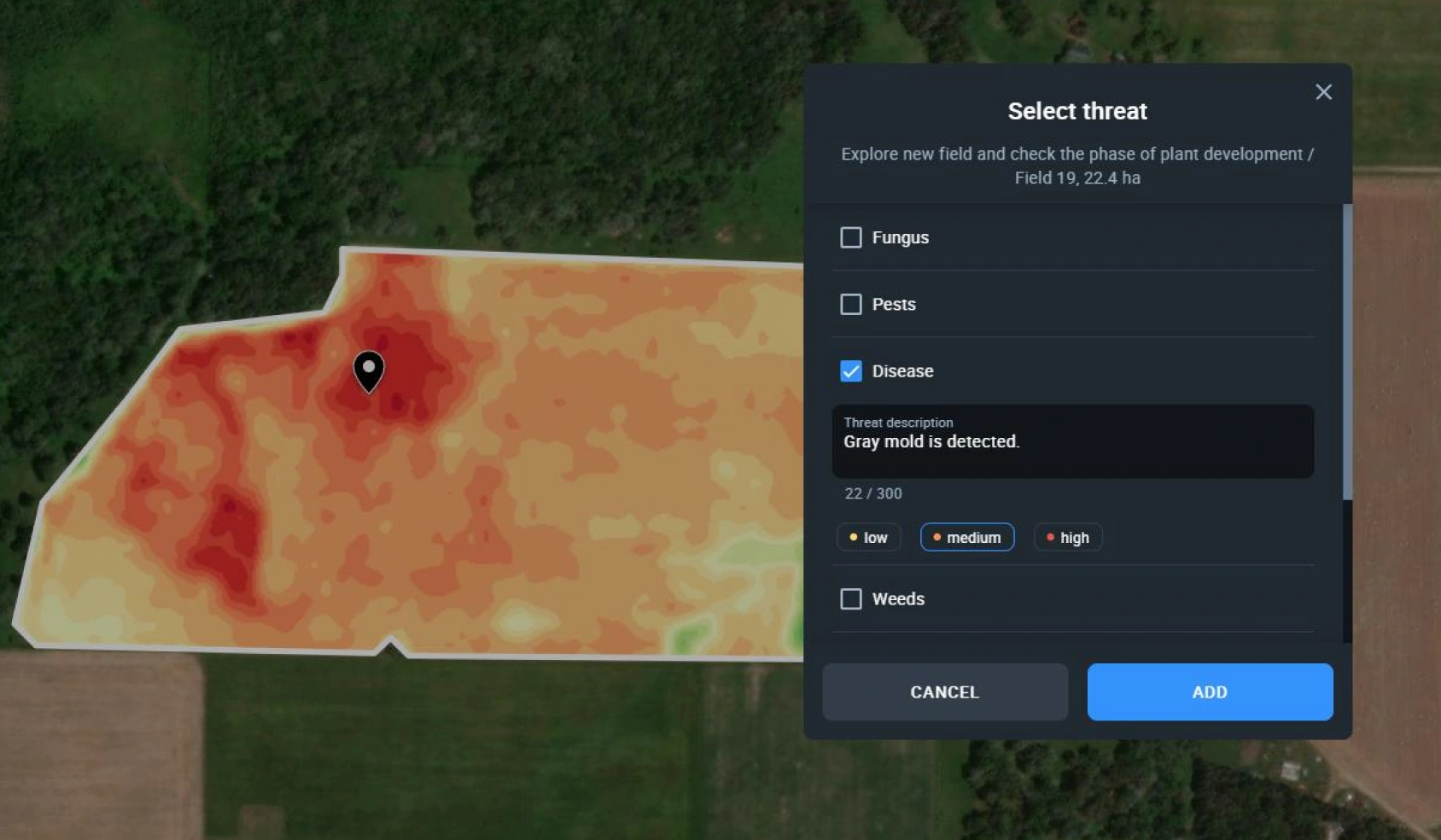
Planning Anti-Disease Measures Using Field Activity Log
The Field activity log in EOSDA Crop Monitoring is a useful tool for keeping track of everything you do to keep Botrytis cinerea at bay. In one easy-to-use interactive calendar-like environment, you can manage all of your fungicide applications, irrigation activities, pruning, and crop residue management operations across all of your fields. This farm management feature is appreciated by agriculture cooperatives since it helps all members coordinate their efforts to control Botrytis cinerea.
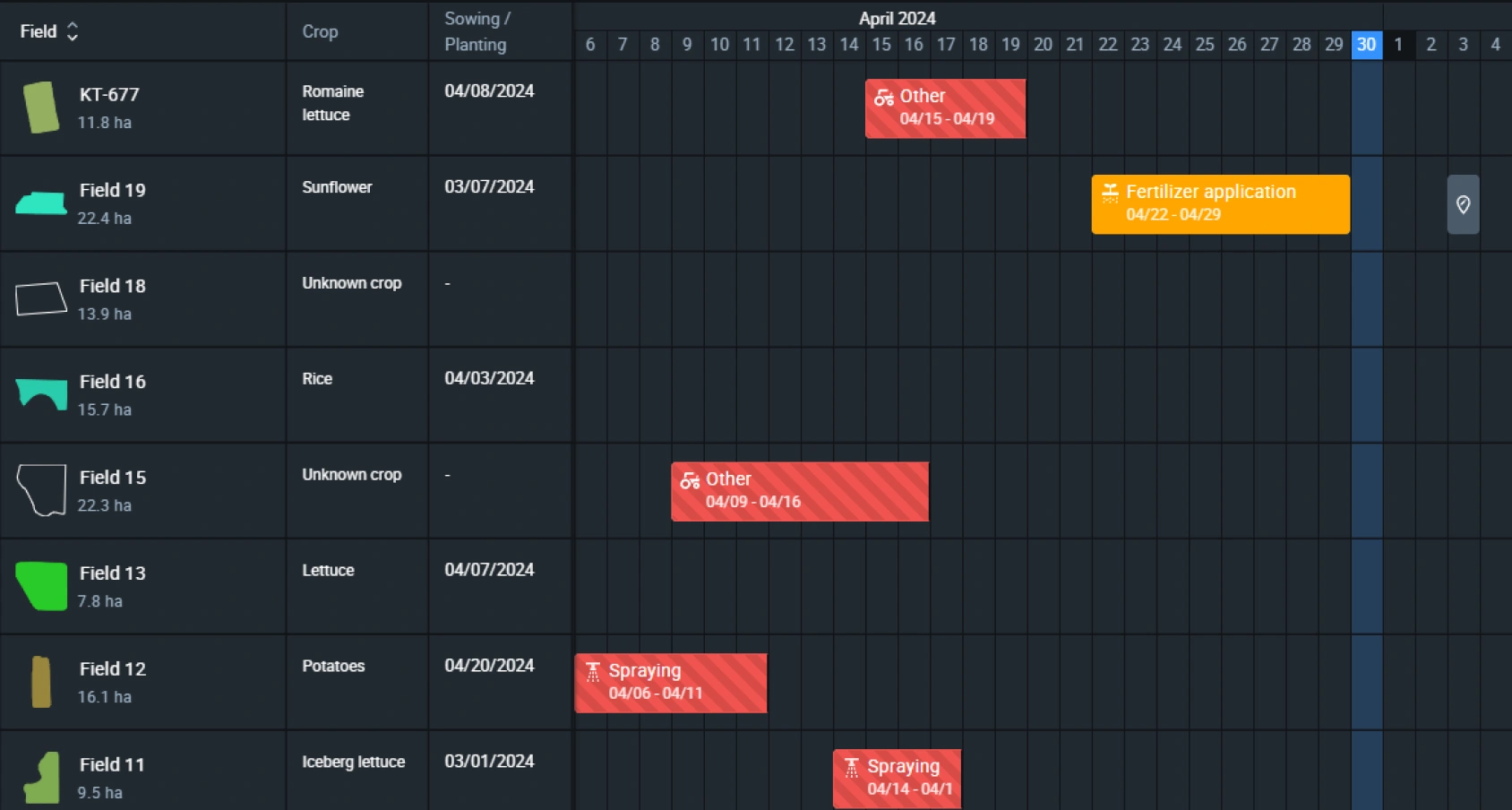
Treating gray mold on plants is a complex and lasting process. There is no guarantee that the disease will not come back, even after taking proper actions. Even so, thanks to advanced remote monitoring technologies, you can stay ahead of the disease and protect your crops at all times.
About the author:
Vasyl Cherlinka is a Doctor of Biosciences specializing in pedology (soil science), with 30 years of experience in the field. He attended the engineering college in Ukraine and received his degree in agrochemistry, agronomy and soil science in the Chernivtsi National University. Since 2018, Dr. Cherlinka has been advising EOSDA on problems in soil science, agronomy, and agrochemistry.
Recent articles

Analyze 2025 & Plan Your Best Year Yet: LandViewer Christmas Offer
It’s the most wonderful time of the year! The Christmas holidays are here, and so is your chance to analyze 2025 and plan a prosperous 2026 with more affordable Pro plans in LandViewer.

EOSDA Models Climate Change Impact On Sugarcane Yields
EOSDA modeled future temperature, rainfall, and other climate impacts on Veracruz sugarcane. The results help growers plan long-term adaptation strategies, including timing, varieties, and irrigation.

EOSDA LandViewer Black Friday Sale: Exclusive Offers & Giveaway
This Black Friday, LandViewer offers new users the chance to save on monthly plans, get extra months with yearly subscriptions, and participate in a free annual plan giveaway.